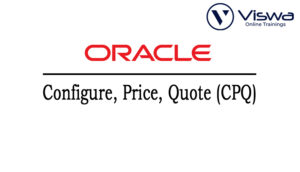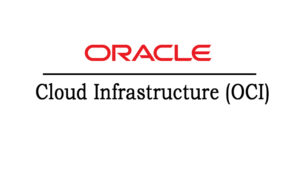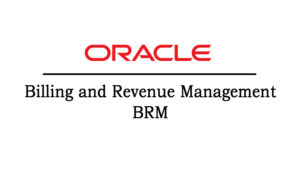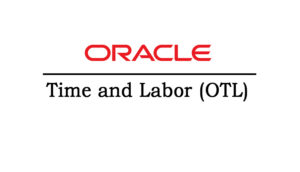Azure Data Factory Certification Training
One of the top providers of online IT training worldwide is VISWA Online Trainings. To assist beginners and working professionals in achieving their career objectives and taking advantage of our best services, We provide a wide range of courses and online training.
Learners : 1080
Duration: 20 Days
About Course
Our Azure Data Factory is aware of the need for a top-notch training program as well as hands-on experience with implementation, as both elements are fundamental to your future career in Azure Certification. All the essential components of classes are thoroughly covered in our well-organized online training course in ADF Training, with a focus on real-world situations. You may simply clear your worries and receive the precise direction that is required from Azure Data Factory Online Training sessions thanks to access to knowledgeable trainers and instructor-led training sessions.
Azure Data Factory Training Course Syllabus
| Live Instructor Based Training With Software |
| Lifetime access and 24×7 support |
| Certification Oriented content |
| Hands-On complete Real-time training |
| Get a certificate on course completion |
| Flexible Schedules |
| Live Recorded Videos Access |
| Study Material Provided |
Azure Data Factory Training - Upcoming Batches
Coming Soon
8 AM IST
Coming Soon
AM IST
Coming Soon
8 PM IST
Coming Soon
PM IST
Don't find suitable time ?
CHOOSE YOUR OWN COMFORTABLE LEARNING EXPERIENCE
Live Virtual Training
-
Schedule your sessions at your comfortable timings.
-
Instructor-led training, Real-time projects
-
Certification Guidance.
Self-Paced Learning
-
Complete set of live-online training sessions recorded videos.
-
Learn technology at your own pace.
-
Get access for lifetime.
Corporate Training
-
Learn As A Full Day Schedule With Discussions, Exercises,
-
Practical Use Cases
-
Design Your Own Syllabus Based
Azure Data Factory Training FAQ'S
In the modern world, there is an abundance of data coming from many various sources; when all of this data is combined, it generates a huge mountain of data. There are a few tasks that must be completed before we can upload this data to the cloud.
Data can come from a wide range of sources, each of which may use somewhat different protocols to transmit or channel the information. As a result, the data itself can take on a wide range of shapes and sizes. It is imperative that we handle this information properly once it has been uploaded to the cloud or another type of dedicated storage. In other words, you will need to edit the numbers and omit any extraneous information. In terms of data transfer, it’s critical for us to get information from various sources, aggregate it in one location for storage, and, if necessary, transform it into a more useful form.
This objective can also be accomplished by a conventional data warehouse, albeit with some important restrictions. There are occasions when we are left with no choice but to go ahead and build bespoke programs that handle each of these procedures on an individual basis when it comes to integrating all of these sources. This is a huge source of frustration in addition to taking a lot of time. Either we need to devise more efficient procedures or we need to figure out how to automate this process.
With the help of Azure Data Factory, the complete process might be carried out in a way that is more efficient, organised, and manageable.
Parameters in pipelines can have default values defined.
The number of integration runtime instances that can exist inside a data factory is not constrained in any way. The amount of virtual machine cores that the integration runtime can use to execute SSIS packages for each subscription is however restricted.
Data Factory is able to provide data integration capabilities that are portable across different network topologies thanks to Integration Runtime, a secure computing platform. The use of Integration Runtime makes this possible. The work will probably certainly be done there due to its proximity to the data center. This and other important terms for Azure must be understood if you wish to learn Azure step-by-step.
- The Schedule trigger’s use ensures that the ADF pipeline is carried out in accordance with a set schedule.
- The ADF pipeline can be prompted to run at predefined intervals with the use of the Tumbling window trigger. The pipeline has been kept in its existing condition.
- Every time a triggering event occurs that is somehow related to the blob, the event-based trigger is set off. Two examples of actions that come under this heading are adding a blob to your Azure storage account and deleting it.
By learning through VISWA Online Trainings, advance in your job.
Reviews
 Vishnu Gadipudi2023-08-20I Enrolled in VISWA Online Trainings for IBM Integration BUS course . Recently I Completed IBM Integration BUS Batch. It was Really Awesome Experience. Best Place To Learn , Experienced Trainer, Gives Us High Level Knowledge....
Vishnu Gadipudi2023-08-20I Enrolled in VISWA Online Trainings for IBM Integration BUS course . Recently I Completed IBM Integration BUS Batch. It was Really Awesome Experience. Best Place To Learn , Experienced Trainer, Gives Us High Level Knowledge.... Navya Biradavolu2023-08-20I was enrolled for looker Bl Tool,it was amazing experience . especially soft skill batch is one of my favourite batch . overall learning process is quite impressive.
Navya Biradavolu2023-08-20I was enrolled for looker Bl Tool,it was amazing experience . especially soft skill batch is one of my favourite batch . overall learning process is quite impressive. Indla sneha2023-08-20I have joined I have joined VISWA Online TRAININGS for Java full stack course and i have completed Advance Java module. I had a good knowledge of Hibernate, spring,spring boot,spring MVC. Tutor has knowledge in depth and is supportive. Srinadh sir solved all our doubts....
Indla sneha2023-08-20I have joined I have joined VISWA Online TRAININGS for Java full stack course and i have completed Advance Java module. I had a good knowledge of Hibernate, spring,spring boot,spring MVC. Tutor has knowledge in depth and is supportive. Srinadh sir solved all our doubts.... bindu hima2023-08-20I am recently completed Talend course and trainer is Rajendra very professional and helpful. All the doubts were solved in a precise manner.
bindu hima2023-08-20I am recently completed Talend course and trainer is Rajendra very professional and helpful. All the doubts were solved in a precise manner. Tarunasree Gowra2023-08-20"I truly enjoyed this course." Chaitanya sir fantastic-very knowledgeable. Sir give us very informative and clear instruction on how to achieve the goal. Thank you!
Tarunasree Gowra2023-08-20"I truly enjoyed this course." Chaitanya sir fantastic-very knowledgeable. Sir give us very informative and clear instruction on how to achieve the goal. Thank you! Tejaswini Kommu2023-08-20Overall Linux Admin sessions batch was very good. Mr. RAM Krishna teaching was very helpful to remind our basic concepts in linux & networking.
Tejaswini Kommu2023-08-20Overall Linux Admin sessions batch was very good. Mr. RAM Krishna teaching was very helpful to remind our basic concepts in linux & networking. Gopanaboina Mounika2023-08-20It was great learning with such a great and experienced staff. Praveen Sir (Oracle EPM Cloud - FCCS) was very helpful and operations team also very helpful in solving any minor problems students go through process.
Gopanaboina Mounika2023-08-20It was great learning with such a great and experienced staff. Praveen Sir (Oracle EPM Cloud - FCCS) was very helpful and operations team also very helpful in solving any minor problems students go through process. Jyothi Gutlapalli2023-08-20I like to share my experience which provide lots of courses and one of those I recently completed my Salesforce BA Course and I like to tell you it was a great experience and my knowledge and confidence is really boosted after completing this course.
Jyothi Gutlapalli2023-08-20I like to share my experience which provide lots of courses and one of those I recently completed my Salesforce BA Course and I like to tell you it was a great experience and my knowledge and confidence is really boosted after completing this course. Harshibandi2023-08-20Good experience and great learning platform for Hyperion Essbase and Planning. The faculty is also well trained and soft spoken.
Harshibandi2023-08-20Good experience and great learning platform for Hyperion Essbase and Planning. The faculty is also well trained and soft spoken. Chaitu Viswa2023-08-20It was very good session for QlikView. I would like to thank to teacher Mr.Chandu for providing guidance for the required modules. Thanks VISWA Team for giving apportunity to leran new skills.
Chaitu Viswa2023-08-20It was very good session for QlikView. I would like to thank to teacher Mr.Chandu for providing guidance for the required modules. Thanks VISWA Team for giving apportunity to leran new skills.




